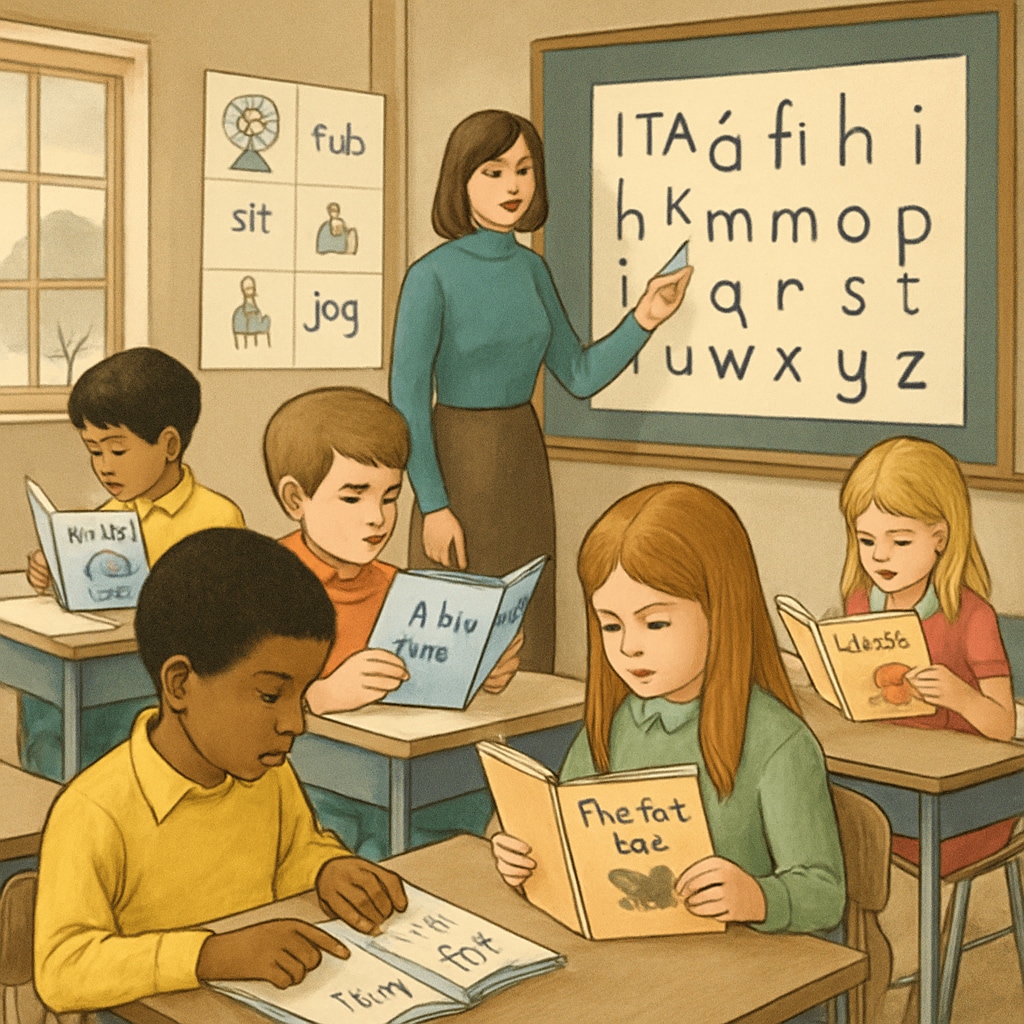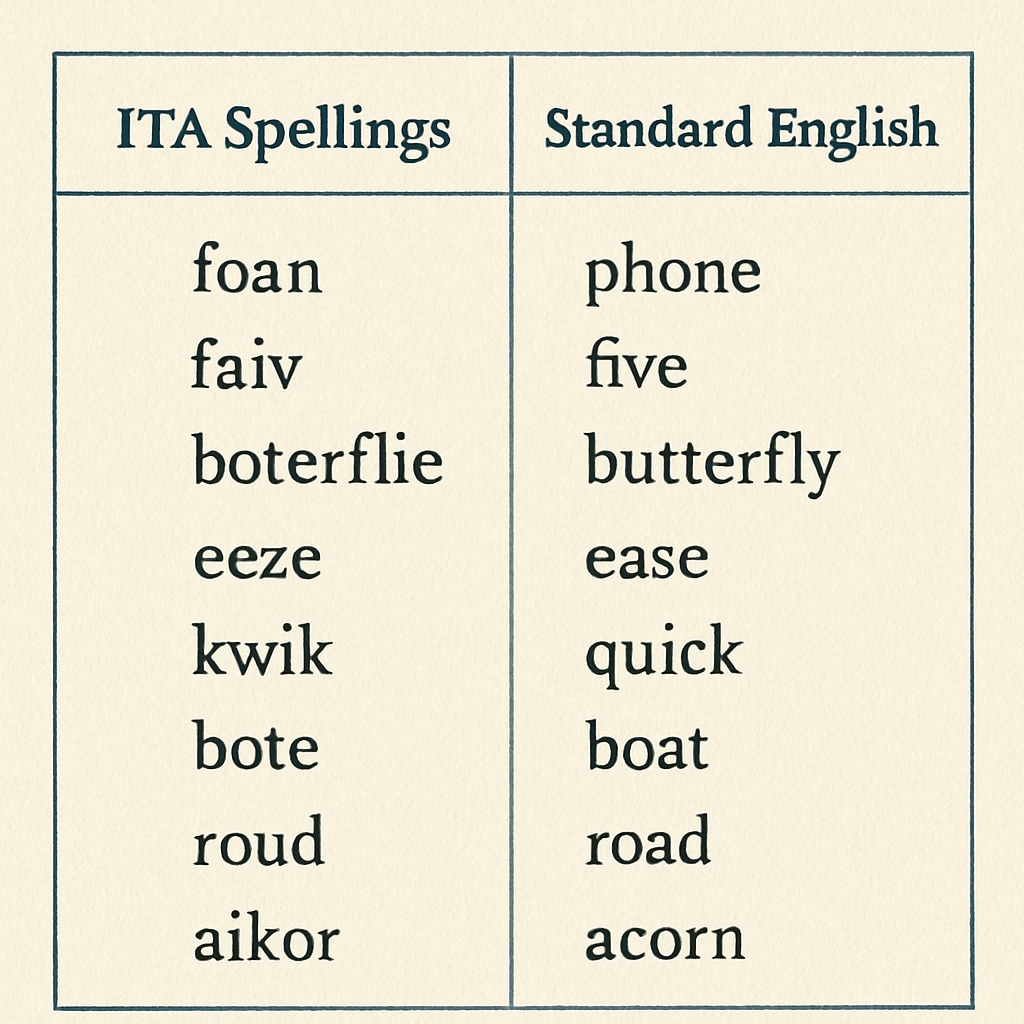The ITA (Initial Teaching Alphabet) was an ambitious educational experiment introduced in the 1970s, aimed at helping children learn to read faster. While it succeeded in its immediate goal, it inadvertently caused enduring spelling challenges for many students, leaving a lasting mark on literacy education. This article explores how the ITA method worked, its unintended consequences, and why its legacy still matters in the context of spelling and literacy debates today.
What Was the ITA and Why Was It Introduced?
The Initial Teaching Alphabet (ITA) was designed as a simplified phonetic alphabet consisting of 44 characters, representing the sounds of spoken English. Unlike the traditional alphabet, which often presented inconsistencies between spelling and pronunciation, the ITA aimed to make reading more intuitive for beginners. It was particularly appealing to educators in the 1970s who hoped to address literacy gaps among young learners.
The method gained traction in schools, especially in English-speaking countries such as the United States and the United Kingdom. Proponents argued that ITA’s phonetic consistency allowed children to focus on decoding words without the confusion of irregular English spelling. However, this innovative approach had a significant drawback: its departure from standard English spelling created long-term literacy complications for many students.

The Long-Term Consequences of the ITA Method
Although ITA was successful in accelerating early reading skills, it introduced unintended negative consequences. Transitioning from ITA to standard English spelling proved challenging for many students. They became accustomed to the phonetic spellings and struggled to adapt to the complexities and irregularities of traditional English orthography.
For example, words like “phone” were spelled as “foan” in the ITA system. Once students had internalized these simplified spellings, reverting to standard English spelling often required them to unlearn and relearn basic literacy rules. For some, this created lasting confusion and even lifelong spelling difficulties—a phenomenon that some educators now refer to as “ITA hangover.”
As a result, while ITA succeeded in making reading accessible in the short term, it raised questions about the trade-offs between early literacy gains and long-term spelling proficiency. These challenges are still remembered in educational discussions today.

Lessons Learned from the ITA Experiment
The ITA experiment serves as a cautionary tale for education systems worldwide. It highlights the importance of considering long-term outcomes when implementing new teaching methods. While innovative approaches can yield immediate benefits, they should not overlook the potential for unintended consequences.
Modern educators and policymakers can draw several lessons from the ITA era:
- Balance short-term and long-term goals: Literacy programs should aim to achieve early success without compromising future learning.
- Monitor and evaluate new methods: Ongoing assessment is crucial to identify and address potential issues before they become widespread.
- Adaptability: Educational strategies must be flexible enough to address the diverse needs of learners, including those who may struggle with transitions between systems.
By understanding the ITA’s legacy, educators can better anticipate the challenges of implementing innovative teaching methods and work to ensure that future initiatives are both effective and sustainable.
Why the ITA Legacy Still Matters
Though decades have passed since the ITA was widely used, its impact continues to be a relevant topic in education. The experiment underscores the complexities of teaching literacy in a language with as many irregularities as English. It also serves as a reminder of the importance of evidence-based practices in education.
In addition, the ITA story resonates with current debates about educational technology and phonics-based teaching methods. For instance, while digital tools like speech-to-text and spelling checkers can support literacy, they may also inadvertently weaken foundational spelling skills if not used thoughtfully. As such, the ITA experiment remains a valuable case study in balancing innovation with caution.
In conclusion, the 1970s ITA teaching method offers both inspiration and warning for educators today. Its success in making reading accessible was undeniable, but its unintended consequences reveal the complexities of teaching language in a way that is both effective and enduring.
Readability guidance: Short paragraphs and lists summarize key points; transitions like “however” and “for example” ensure smooth flow. Technical terms like “orthography” are explained in context to maintain accessibility.


